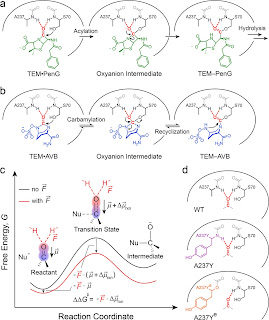Michael R. Lazear, Jarrett R. Remsberg, Martin G. Jaeger, Katherine Rothamel, Hsuan-lin Her, Kristen E. DeMeester, Evert Njomen, Simon J. Hogg, Jahan Rahman, Landon R. Whitby, Sang Joon Won, Michael A. Schafroth, Daisuke Ogasawara, Minoru Yokoyama, Garrett L. Lindsey, Haoxin Li, Jason Germain, Sabrina Barbas, Joan Vaughan, Thomas W. Hanigan, Vincent F. Vartabedian, Christopher J. Reinhardt, Melissa M. Dix, Seong Joo Koo, Inha Heo, John R. Teijaro, Gabriel M. Simon, Brahma Ghosh, Omar Abdel-Wahab, Kay Ahn, Alan Saghatelian, Bruno Melillo, Stuart L. Schreiber, Gene W. Yeo, Benjamin F. Cravatt
bioRxiv 2022.12.12.520090; doi: https://doi.org/10.1101/2022.12.12.520090
Molecular Cell, 2023
https://doi.org/10.1016/j.molcel.2023.03.026
Most human proteins lack chemical probes, and several large-scale and generalizable small-molecule binding assays have been introduced to address this problem. How compounds discovered in such “binding-first” assays affect protein function, nonetheless, often remains unclear. Here, we describe a “function-first” proteomic strategy that uses size exclusion chromatography (SEC) to assess the global impact of electrophilic compounds on protein complexes in human cells. Integrating the SEC data with cysteine-directed activity-based protein profiling identifies changes in protein-protein interactions that are caused by site-specific liganding events, including the stereoselective engagement of cysteines in PSME1 and SF3B1 that disrupt the PA28 proteasome regulatory complex and stabilize a dynamic state of the spliceosome, respectively. Our findings thus show how multidimensional proteomic analysis of focused libraries of electrophilic compounds can expedite the discovery of chemical probes with site-specific functional effects on protein complexes in human cells.










